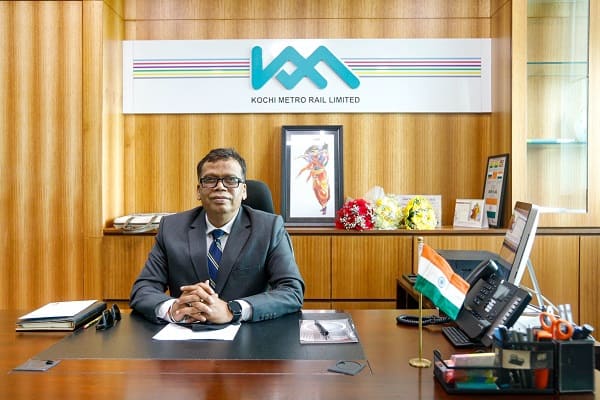In an exclusive interview with Metro Rail Today, Mr. Loknath Behra, the Managing Director of Kochi Metro Rail Limited (KMRL), shares his insightful vision for the future of Kochi Metro and the pioneering Kochi Water Metro project. With a distinguished career that spans leadership roles in the National Investigation Agency (NIA), Central Bureau of Investigation (CBI), and as the Director General of Police in Kerala, Mr. Behra brings a wealth of experience in administration, security, and technology.
Since his appointment as Managing Director of KMRL, he has been instrumental in transforming Kochi’s public transport landscape, with a focus on innovation and sustainability. In this interview, he discusses the promising prospects for Kochi Metro, the integration of water transport, and the future of urban mobility in the region.
What were the major challenges faced during the construction and operation of Phase 1, and how were these managed?
Here’s a look at some of the significant challenges and how they were managed:
Land Acquisition and Resettlement: Acquiring land for Kochi Metro in densely populated areas, particularly in the city center such as MG Road, posed significant challenges during earlier phases. Many affected properties were commercial establishments, which raised concerns about livelihoods. The Kochi Metro Phase I project experienced cost overrunsand time overrunsdue to delays in land acquisition. The transition to the Right to Fair Compensation and Transparency in Land Acquisition, Rehabilitation, and Resettlement (LARR) Act, 2013 introduced stricter procedural requirements and higher compensation rates, significantly impacting the project's budget and schedule.
These delays disrupted the timely availability of land, a critical factor for infrastructure projects, causing cascading effects on construction timelines and overall costs. To mitigate these challenges, Kochi Metro Rail Limited (KMRL) actively engaged with the Government of Kerala, which authorized mechanisms like the District Level Purchase Committee (DLPC)and State Level Expert Committee (SLEC) to expedite land acquisition and minimize further delays.
To address these challenges, the government and Kochi Metro Rail Ltd. (KMRL) implemented measures such as offering fair market-value compensation, providing resettlement options for displaced families and engaging in public consultations to maintain transparency and build trust.
Construction of Balanced Cantilever for Kochi Metro Over Ernakulam South Railway Line: The construction of the 90-meter balanced cantilever for Kochi Metro Phase 1 over the Ernakulam South Railway Line faced multiple significant challenges, due to both the urban environment and the operational constraints of the busy railway line. Here are the key challenges encountered during this process:
Limited Space: The metro construction site was located in a densely built urban area with narrow roads and existing infrastructure, making it difficult to establish large work zones for construction. The balanced cantilever method was chosen as it required minimal space for assembly and was efficient in confined settings.
Ensuring Safety of Existing Railway Operations: The Ernakulam South Railway Line is a busy transportation hub, and any disruption to its operations could cause significant delays. Maintaining safe distances and ensuring that the metro construction did not interfere with train schedules was critical. Careful planning was required to prevent accidents and ensure the safe handling of both construction materials and the continuous operation of trains.
Structural Integrity and Precision: The balanced cantilever technique requires a high degree of precision in aligning segments and ensuring that the weight is symmetrically balanced. Since the viaduct structure was being built over an active railway line, structural stability was paramount to avoid any risks to the ongoing rail traffic beneath.
Technical Coordination: The complexity of coordinating work between multiple teams, including engineers, safety personnel, and railway authorities, required meticulous planning. Delays or missteps in one area could affect the progress of the entire project.
Despite these challenges, the use of the balanced cantilever method proved to be an effective solution for building the elevated metro track over the busy railway line, ensuring minimal disruption and maintaining safety while progressing with the metro project.
Traffic Management and Public Disruption: Constructing the metro line in heavily trafficked areas caused frequent disruptions, congestion, and inconvenience for the public and local businesses.
KMRL collaborated with local police and traffic authorities to create detailed traffic diversion plans. Construction schedules were adjusted to off-peak hours wherever possible, and alternate routes were designated to ease congestion.
How has Phase 1 impacted traffic congestion and the overall public transport scenario in Kochi?
Kochi Metro Phase 1 has significantly impacted traffic congestion and transformed the public transport landscape in Kochi. Here’s a closer look at its effects:-
Reduced Traffic Congestion: The metro has helped reduce the number of private vehicles on Kochi’s roads, especially along the busy Aluva-MG Road-Petta corridor. With metro access, many commuters have shifted from cars, bikes, and auto-rickshaws to metro services, easing road congestion.
By offering a fast, efficient, and reliable alternative to road travel, Kochi Metro has become an attractive option, especially during peak hours. Additionally, better integration with feeder services has encouraged more people to adopt public transit.
Improved Connectivity and enhanced public transport integration: The Kochi Metro has significantly enhanced connectivity between key residential, commercial, and industrial hubs, offering convenient and direct transit options for both residents and workers. Strategically located metro stations ensure easy access to major areas, reducing commuting times and simplifying travel throughout the city.
The Kochi Metro offers seamless connectivity and significantly shorter travel times compared to road transport, making it a preferred choice for daily commuters. Enhanced last-mile connectivity options, such as e-rickshaws and e-buses along the metro corridor, further enhance accessibility and convenience. Additionally, Kochi Metro provides multi-modal connectivity at Vyttila, where the metro integrates with the Water Metro and bus services, creating a comprehensive transit hub. Kochi Metro has also enhanced non-motorized transport by constructing approximately 31 kilometers of footpaths in and around metro stations, promoting safer and more accessible pedestrian movement.
Reduced Carbon Emissions and Environmental Impact: By reducing the number of private vehicles on the road, the Kochi Metro has significantly contributed to lowering carbon emissions. This impact is particularly notable in areas with high traffic density, where decreased emissions lead to improved air quality and a healthier urban environment.
The Kochi Metro’s use of solar energy to power operations and its energy-efficient station designs significantly enhance its eco-friendly footprint. KMRL has installed and commissioned a solar power project with an installed capacity of 10.5 MWp, utilizing the rooftops of metro station buildings, depot buildings, and other areas. This project was implemented through the RESCO (Renewable Energy Service Company) model, where the power producer (contractor) invests in, installs, operates, and maintains the plant, while KMRL, as the power purchaser, agrees to buy the electricity at a predetermined rate for the plant’s 25-year lifespan. With this setup, KMRL currently achieves 50% energy neutrality.
E-Autos and E-buses are also plying as feeder services for the Metro which are initiatives contributing to reduction of carbon emissions. Apart from these, 1000 MyByk bicycles have been provided at the metro stations to enable commuters to ride to nearby locations.
Time Savings and Increased Productivity: Kochi Metro commuters enjoy reduced travel times and more reliable schedules, enabling better day planning and significantly less time spent in traffic. This has resulted in enhanced productivity and an improved quality of life for regular users.
Unlike road travel, Kochi Metro operates on fixed schedules that are unaffected by traffic conditions, ensuring faster travel times. Additionally, the metro's design offers easy access for commuters, making the journey both quick and comfortable.
Boost to Economic Activity Along Metro Corridors: The metro has driven economic growth in areas around its stations, boosting foot traffic to local businesses and increasing the attractiveness of these areas for new commercial developments. In and around the Kochi Metro corridor, significant commercial and residential development has taken place.
Kochi Metro has provided easier access to shopping, office spaces, and recreational facilities, leading to a rise in customers for businesses near metro stations such as Edappally, MG Road, Vyttila Mobility Hub, and SN Junction. The metro's presence has also stimulated real estate development and increased property values in adjacent areas.
Increased Public Awareness and Acceptance of Public Transport: The success of Kochi Metro Phase 1 has fostered a cultural shift, with more people opting for public transportation over private vehicles—a significant change in a city traditionally reliant on cars and two-wheelers. KMRL’s engagement with the community, along with the metro’s high-quality service, has built public confidence in public transport. The metro’s user-friendly infrastructure and amenities have further contributed to its widespread acceptance across various sections of society.
Could you share any specific lessons learned from Phase 1 that have been applied to Phase 2 or other upcoming projects?
Kochi Metro Phase 1 provided valuable insights and lessons that have informed the planning and execution of Kochi Metro Phase 2 and other future projects. Here are some key lessons learned and how they are being applied:
Enhanced Land Acquisition and Stakeholder Engagement: Land acquisition was a complex and time-consuming challenge during Phase 1, which sometimes led to delays.
In Phase 2 of the Kochi Metro project, Kochi Metro Rail Limited (KMRL) has adopted a more refined and efficient approach to land acquisition. This process is carried out in accordance with the Land Acquisition, Rehabilitation, and Resettlement (LARA) Act, which ensures fair compensation and rehabilitation for affected landowners. A key aspect of KMRL's strategy is the early involvement of local authorities and community representatives in the planning stages. By engaging with the local population from the outset, KMRL has fostered a sense of collaboration and transparency, helping to build trust and minimize opposition to the project.
Furthermore, KMRL has improved compensation packages, offering better deals to those impacted by the land acquisition. This has led to smoother negotiations and less resistance from the affected communities. Transparent communication is another crucial factor in KMRL's approach. By keeping the public informed about the process, timelines, and potential impacts, the project has been able to avoid misunderstandings and delays that might otherwise occur in large-scale infrastructure projects. These measures have collectively helped streamline the land acquisition process, ensuring that Phase 2 of the Kochi Metro can proceed with minimal setbacks and within the planned timeframe.
Improved Multimodal Integration: While Phase 1 of the Kochi Metro successfully integrated with other modes of transport, there was still room for improvement in last-mile connectivity and seamless transfers. Phase 2 of the project aims to address these gaps by offering even greater integration with buses, ferries, and other public transportation systems. KMRL is enhancing last-mile connectivity through the introduction of feeder buses, e-rickshaws, bicycle-sharing programs, and pedestrian-friendly infrastructure. These initiatives are designed to make it easier for commuters to transition smoothly from the metro to other modes of transport, improving overall mobility and convenience for the public.
Scalability of Revenue Streams: Phase 1 of the Kochi Metro highlighted the importance of diversifying revenue sources beyond ticket sales, with opportunities in advertising, station naming rights, and commercial leasing. To build on this, KMRL is expanding these alternative revenue streams by developing retail and commercial spaces in and around stations, particularly in areas like KINFRA and Infopark. Additionally, digital advertising, partnerships with local businesses, and real estate development near metro stations are part of the strategy to boost revenue, reducing reliance on fare collection alone. This multifaceted approach aims to make the metro financially sustainable in the long term.
What are the primary goals of Phase 2, and how do they differ from those of Phase 1?
Kochi Metro Phase 2 builds on the foundation of Phase 1, with a broader set of goals that reflect lessons learned and the evolving needs of Kochi’s urban landscape. While Phase 1 focused primarily on establishing a modern, efficient metro system to reduce traffic congestion, Phase 2 aims to deepen and expand the metro’s impact on sustainable urban growth and public transit integration.
Here are the primary goals of Kochi Metro Phase 2 and how they differ from those of Phase 1:
Expanding Connectivity to New Areas: Phase 2 extends the metro network from JLN Stadium to InfoPark via Kakkanad (11.2 km with 11 stations), targeting the IT hub and commercial zones to support economic growth.Phase 2 provides direct metro connectivity to employment hubs, such as InfoPark and other tech corridors, catering to professionals and daily commuters.Phase 2 aims to handle increasing passenger demand while improving accessibility in under-connected suburban and IT areas.By focusing on Kochi’s IT and commercial corridors, Phase 2 emphasizes economic integration and connectivity, diverging from Phase 1’s goal of foundational urban transit.
Emphasizing Environmental Sustainability and Green Infrastructure: Phase 2 further reduce environmental impact by expanding renewable energy use, increasing green cover around stations, and adopting energy-efficient construction practices. Phase 1 introduced eco-friendly measures like solar panels, Phase 2 is designed to push sustainability further with a goal of achieving near self-sufficiency in energy, broader use of solar power, rainwater harvesting, and electric vehicle charging infrastructure.
Increasing Ridership and Reducing Road Congestion: Phase 2 increase daily ridership by providing more comprehensive coverage, faster commute options, and last-mile connectivity, drawing a wider demographic, including suburban commuters and students.Phase 2 aims to expand the metro’s reach, drawing in suburban riders who currently rely on personal vehicles, which will further reduce traffic and pollution across a broader area.
Boosting Economic Growth in Emerging Corridors: Kochi Metro Phase 2 aims to provide mass rapid transit connectivity to key IT hubs such as InfoPark, thereby improving accessibility across various parts of Kochi. The project is designed to enhance connectivity to emerging economic zones, facilitating smoother commutes and encouraging further investment in technology, education, and service sectors.
With its focus on linking high-potential areas like Kakkanad, Phase 2 is expected to accelerate urban growth, reduce travel times, and offer an eco-friendly transport solution. The initiative supports economic diversification and ensures balanced development by extending infrastructure to suburban regions, making them more attractive to businesses and investors. This approach is integral to strengthening Kochi's position as a hub for technology and services.
In summary, Kochi Metro Phase 2 aims not only to expand the network but also to make the metro system a catalyst for sustainable urban development, better transit integration, and economic growth. These goals reflect a broader vision than that of Phase 1, aligning with the city’s growth trajectory and aiming to create a more resilient, accessible, and eco-friendly urban transit system.
Could you provide an update on the current progress and projected timelines for Phase 2?
Kochi Metro Phase 2 has marked significant progress since construction commenced on the entry/exit building of a station in March 2023. The Design and Build Civil Works Contract (covering viaducts and stations) was awarded in June 2024, representing a pivotal milestone in the project timeline. In September 2024, the first working pile was inaugurated at the Cochin SEZ station, marking the initiation of foundational structural works. Additional contracts for other components of the project are currently in the pipeline, ensuring systematic and phased implementation.
The Asian Infrastructure Investment Bank (AIIB) is set to approve a loan of $122 million to support the construction and development of Kochi Metro Phase 2. This funding is expected to be formally approved by December 2024, marking a significant financial milestone for the project. The loan will facilitate the extension of the metro network, particularly aiding in civil works, station construction, and other infrastructure development activities.
This phase aims to add 11 new stations over an 11.2-kilometer stretch, connecting major residential, commercial, and IT hubs such as Kakkanad and the Special Economic Zone (SEZ). Project is expected to be completed by November 2026.
Have there been any significant technological or design changes in Phase 2 based on the experiences from Phase 1?
Kochi Metro Phase 2 incorporates several technological and design advancements based on lessons learned from Phase 1, particularly aimed at enhancing operational efficiency, environmental sustainability, and commuter convenience. Here are some key changes:
Enhanced Sustainability Features
Solar Energy Expansion: Building on the success of solar energy utilization in Phase 1, Kochi Metro Phase 2 aims to deepen its commitment to renewable energy. Kochi Metro Rail Limited plans to enhance its use of renewable energy by installing solar panels along the handrails of the viaduct, an innovative approach to utilizing typically unused surfaces for energy generation. Additionally, solar panels will be installed at nearly all the stations in Phase 2, making solar energy a core component of the metro's energy strategy. Additionally, nearly all stations in Phase 2 will be equipped with solar panels, making renewable energy a cornerstone of the metro’s energy strategy. These solar installations are expected to contribute significantly to the energy requirements of the metro system, reducing dependency on conventional power sources. By leveraging clean energy, Kochi Metro Rail Limited (KMRL) reinforces its focus on sustainability, substantially lowering its carbon footprint while aligning with global climate goals.This initiative not only underscores KMRL’s role in promoting green infrastructure but also serves as a model for sustainable urban development across India.
Green Building Standards: Phase 2 includes advanced sustainable practices in station design, including energy-efficient lighting, improved insulation, and water-saving technologies. This aligns with KMRL's goal to create a green transit system and reduce long-term operating costs
Precast Technology in Kochi Metro Phase 2: Viaducts and Stations
For Kochi Metro Phase 2, both viaducts and stations are being constructed using precast technology, a method that enhances efficiency and reduces construction time. This approach ensures high-quality, durable components are produced off-site in controlled conditions and assembled on-site. Precasting brings multiple benefits, including faster construction, improved quality control, reduced disruptions in the urban environment, and optimized resource management. Building on the success of Phase 1, precast techniques are key to meeting project deadlines and maintaining structural integrity while minimizing environmental impact.
Transit-Oriented Development (TOD) and Community Spaces
Phase 2 aims to foster transit-oriented development by creating mixed-use spaces around stations. This includes commercial spaces, retail outlets, and pedestrian-friendly zones to create community hubs, enhancing accessibility and encouraging urban growth around transit facilities.These design and technological improvements in Phase 2 reflect Kochi Metro’s adaptability, focusing on sustainability, resilience, and better urban integration to meet the city’s growing needs effectively.
What role does the water metro aim to play in complementing the rail based metro network?
Urban transport solutions are to be designed and planned keeping in mind the geography of the area being catered to. Kochi, the commercial capital of Kerala, is surrounded by an island agglomeration of about 10 islands. Most of these islands are densely populated and islanders hugely depend on the main land for their livelihood, healthcare, education, employment, trade and business.
With huge capital investment required for land acquisitions and construction costs/km for rail metro project, Water metro project stands apart with minimal capital expenditure and all modern metro-like commuting facilities being provisioned in comparison on waters.
Water Metro is conceptualized as feeder mode of service to the rail metro system in mainland. However, water metro by its own significance has now become a standalone cum intermodal public transport for the city of Kochi. Rail and Water metro along with other feeder options like buses, taxis, autos and bicycles together complete the transport circle of Kochi city. All these modes are well integrated to ensure hindrance free commuting experience for the travelers in city.
What unique challenges has the Water Metro faced, particularly regarding waterway maintenance and infrastructure.
No reference to any such previous project available nationally or internationally. Statutory Approvals/Clearance for the project like EIA, CRZ, ASI, Wild life, KSPCB, SWAK, etc. from State and Central Governments. Collection of data by survey like geotechnical, topography, bathymetry, flood and tide levels, etc. across Kochi geography. Dredging and dredge disposal in navigational waterways. Setting up of disabled friendly infrastructure from entry to exit including boats, terminals and floating pontoons to ensure hindrance free passenger commuting for elderly and physically challenged. Selection and design of most modern state of the art hybrid-electric ferry with metro amenities like air-conditioning, passenger information display and announcement systems, seating cum standing architecture, etc. Establishment of most modern terminals with AFC, PAS, PIDs, CCTV, PCS, ITMS and ferries with Radar, DMR, VHF, VAS, PAS, PIDS, CCTV, etc. to ensure safe, secure & reliable passenger commuting. Setting up of Operations Control and Command Centre (OCC) to monitor and control everyday operations 24x7.
How do you envision the Water Metro influencing tourism and local commuting patterns in Kochi?
Kerala, known as God’s own Country in the world tourism map, is among the list of must go top 50 destinations across the globe by Time Magazine and many others. The Kerala backwaters offers a unique experience with beautiful ecosystem that supports rich diversity of flora and fauna. Vembanad Lake, one of the largest lakes in India, stretches across many districts of Kerala, forming the largest brackish lagoon and is thriving in tourism activities, which is one of the major economic activities of the state and a major income source for a vast population in and around.
Kochi’s Water Metro redefines the city’s landscape, creating a ripple effect of growth in tourism and commerce on the islands. With bustling terminals and thriving businesses, the project has become a beacon of hope for local islanders and tourists alike. The Water Metro not only connects the city’s islands but also the people, opening doors to a world of opportunities. This visionary project aims to connect the island communities to the mainland, fostering their socio-economic growth, improving livelihoods and enhancing island tourism prospects. The serene beauty of the islands along with exposure to traditional activities remains a boosting factor in State’s tourism development.
Over a thousand traditional houseboats are engaged in the backwater tourism sector of Kerala, majority of them operating in Kochi, Kumarakom and Alleppey regions, but prone to create pollution due to the large use of fossil fuels for energy needs. Water Metro Electric Boats shows way forward here and can be suitably modified to meet tourism prospective and can very well cater to the needs of a climate-friendly tourist ecosystem in the State of Kerala, India. The ridership values till date is approx. 3.1 million+ with average daily ridership close to 5000+ passengers/day including tourists and daily commuters.
As the Water Metro boat gracefully glides through Kochi’s serene backwaters, it unveils a world of potential, stimulating the business sector and unlocking the tourism treasures of the city’s enchanting islands. The High Court Water Metro Terminal is alive with activity, its air thick with anticipation as street vendors, lottery sellers and game enthusiasts weave through the crowds, offering a slice of daily life in Kochi. The approach to Fort Kochi terminal is picturesque with heritage sites on one side and Historical Chinese fishing nets on the other. The close passing ships, International container trans-shipment terminal and horizon view adds to the unique experience. Whereas the route from Vytilla to Kakkanad totally changes the backdrop – the serene, calm water way opens lens to a nature friendly scenario. Sighting of varied species of flora and fauna along this route is appreciated by many.
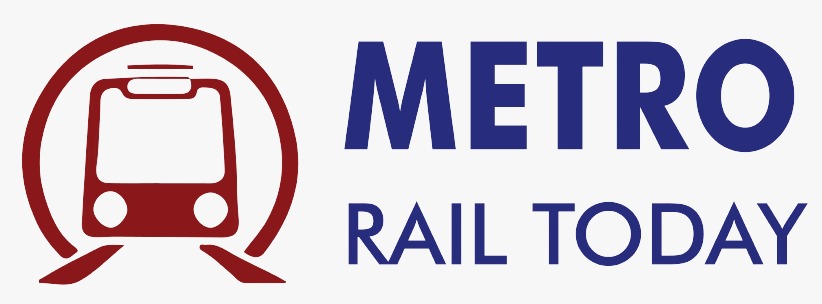


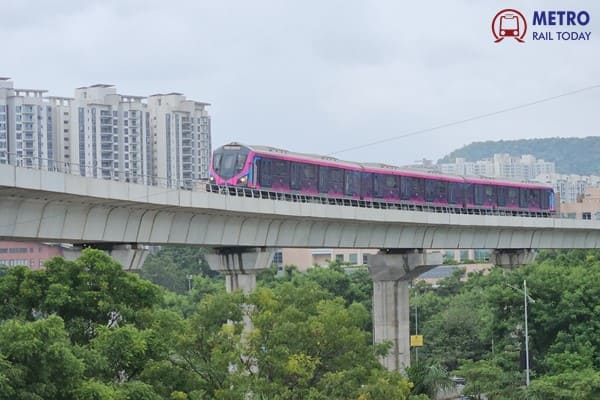 Pune Metro Line 3 makes history with All-Women Train Operators under Keolis Contract
Pune Metro Line 3 makes history with All-Women Train Operators under Keolis Contract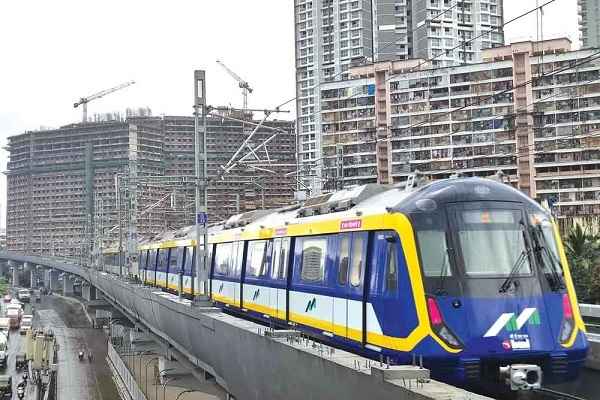 MMRDA commences trial test run on Mumbai Metro Line 4
MMRDA commences trial test run on Mumbai Metro Line 4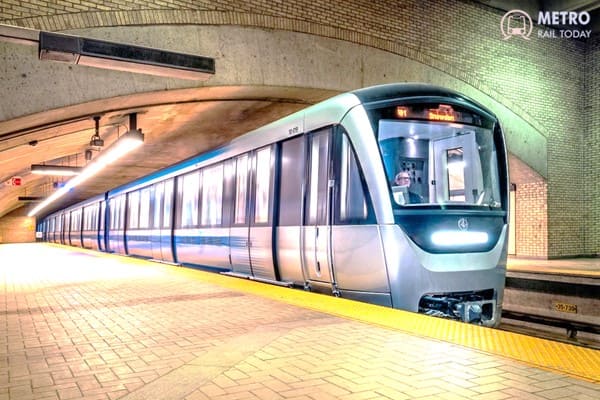 CAF bags €450 Million Contract to modernise and maintain Cairo Metro Lines 1 & 2
CAF bags €450 Million Contract to modernise and maintain Cairo Metro Lines 1 & 2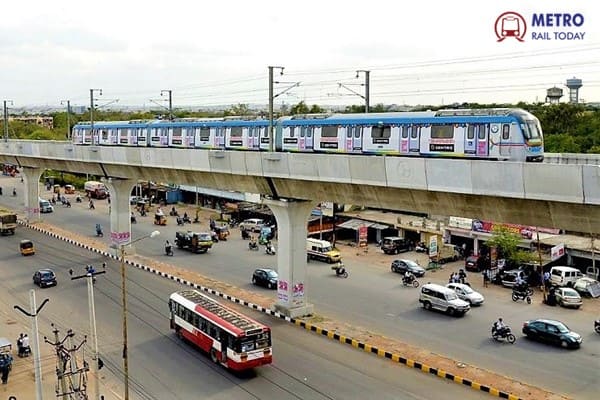 Hyderabad Metro Phase 2 Expansion Hits Roadblock as L&T Objects to Network Integration
Hyderabad Metro Phase 2 Expansion Hits Roadblock as L&T Objects to Network Integration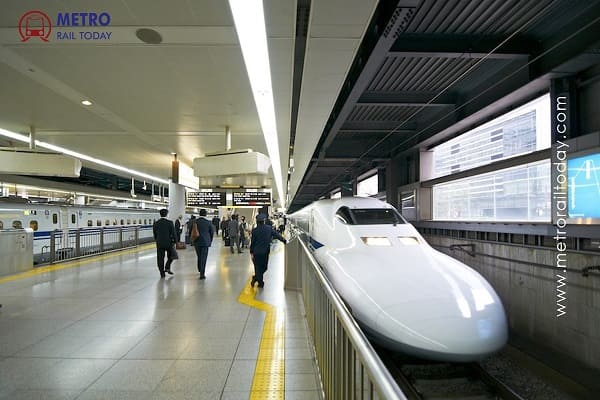 First Undersea Tunnel Breakthrough achieved on Mumbai-Ahmedabad Bullet Train Project
First Undersea Tunnel Breakthrough achieved on Mumbai-Ahmedabad Bullet Train Project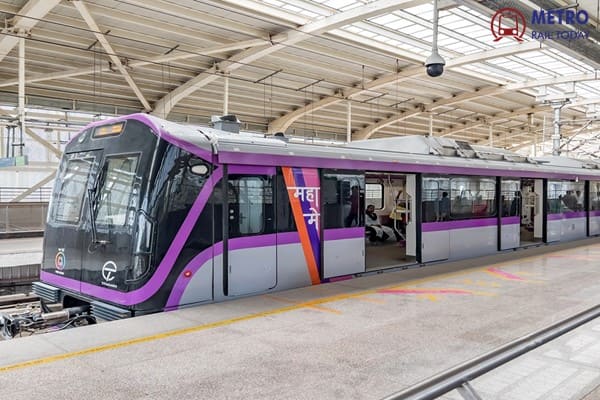 ITD Cementation wins ₹1,644 Cr Civil Contract for Swargate - Katraj UG section of Pune Metro
ITD Cementation wins ₹1,644 Cr Civil Contract for Swargate - Katraj UG section of Pune Metro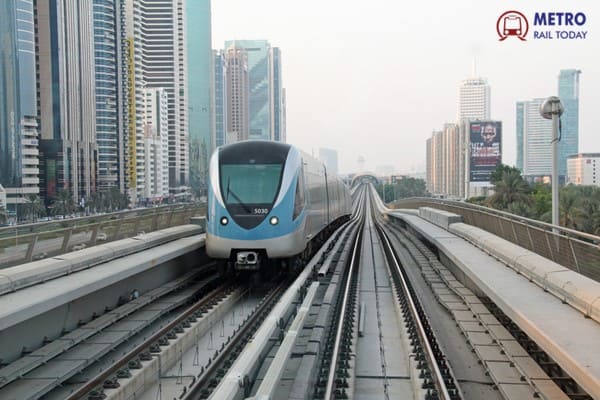 Beyond the Rails: What Indian Metros Can Learn from the World's Best
Beyond the Rails: What Indian Metros Can Learn from the World's Best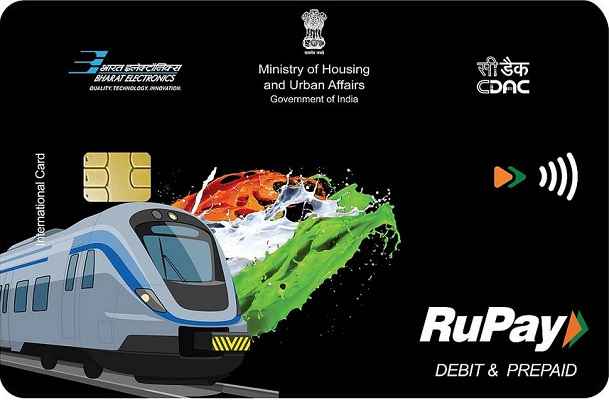 One Nation, One Card: Delhi to launch colour-coded Smart Mobility Cards for Metro, RRTS and Bus
One Nation, One Card: Delhi to launch colour-coded Smart Mobility Cards for Metro, RRTS and Bus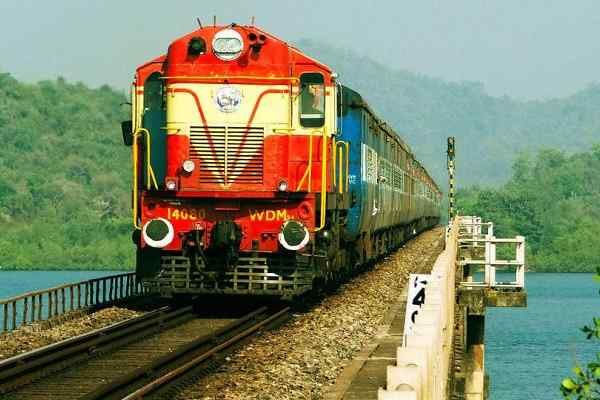 Lotus Wireless Technologies bags Kavach 4.0 Safety System Order for Indian Railways
Lotus Wireless Technologies bags Kavach 4.0 Safety System Order for Indian Railways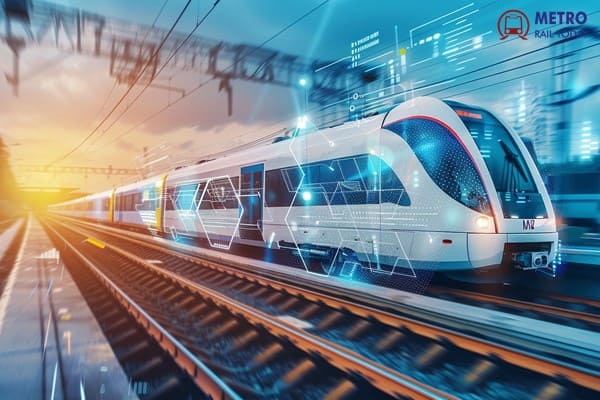 Concord Control Systems bags First Order for KAVACH 4.0 from Indian Railways
Concord Control Systems bags First Order for KAVACH 4.0 from Indian Railways